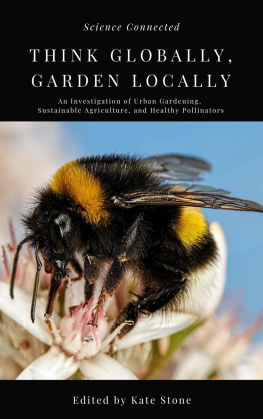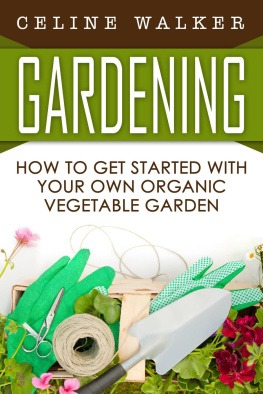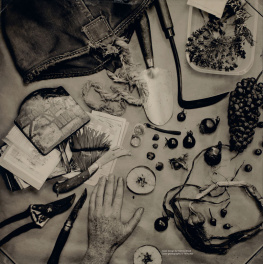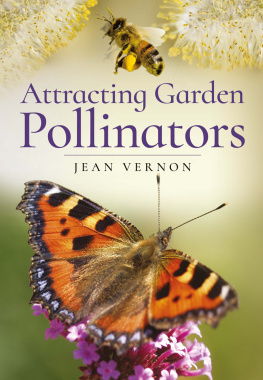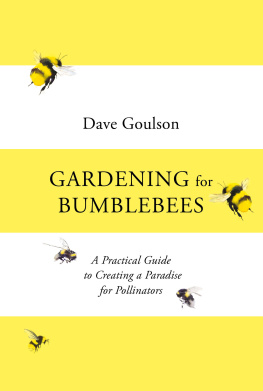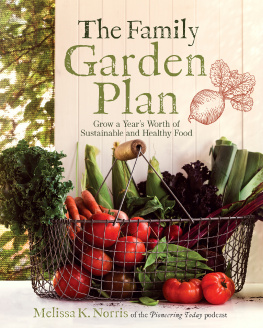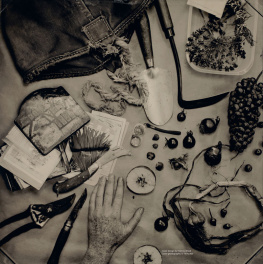Think Globally, Garden Locally: An Investigation of Urban Gardening, Sustainable Agriculture, and Healthy Pollinators
Science Connected
Published by Science Connected, 2020.
Collection and editorial concept 2020, 2018 Science Connected. Design and concept copyright 2018 Science Connected and its licensors. All rights reserved. Any unauthorized duplication in whole or in part or dissemination of this edition by any means (including but not limited to photocopying, electronic devices, digital versions, and the Internet) will be prosecuted to the fullest extent of the law.
Think Globally, Garden Locally: An Investigation of Urban Gardening, Sustainable Agriculture, and Healthy Pollinators
Published in the United States by Science Connected
P.O. Box #190213 San Francisco, CA 94119
www.scienceconnected.org
Science Connected is a 501(c)(3) public charity.
This book was made possible through to a grant from the Clif Bar Family Foundation.
Contributing authors: Emily Rhode, Cathy Seiler, Steven Spence, and Jonathan Trinastic
Editor: Kate Stone
Proofreaders: Elizabeth Sullivan, Rachel McCabe, and Sabrina Leroe
Interior design: Caety Klingman
Recommended reading list: Norman Rusin
Cover photograph: John Kimbler
This book is independently authored and published and no sponsorship or endorsement of this book by, and no affiliation with, any trademarked product mentioned or pictured within is claimed or suggested. All trademarks that appear in the text, illustrations or photographs in this book belong to their respective owners and are used here for informational purposes only. This book has been written and published strictly for informational purposes, and in no way should be used as a substitute for actual instruction with qualified professionals. The authors and publisher are providing you with information in this work so that you can have the knowledge and can choose, at your own risk, to act on that knowledge. Any use of the information in this book is made on the readers good judgment.
W e dedicate this book to lifelong learners, pollinator-lovers, and gardeners everywhere. Whether you have a vast orchard, a home garden, or a city apartment with a window box, if you care about sustainable food production, we tip our hats to you.
T his project was made possible by a grant from the Clif Bar Family Foundation and by the generous support of readers like you. Proceeds from the sale of this book support Science Connected programs and projects.
Thank you!
Gardening Alternatives to Pesticides
Steven Spence

Tulips in Germany
G ardens Are a Delight
Sadly, its not just gardeners, bees, butterflies, and birds that enjoy gardens. Gardens inevitably also attract insect pests, as I know firsthand from working on my little plot with flowers and fruit trees. In my first year of gardening, I didnt know what to do to get rid of an aphid infestation, so I went to a local garden supply store and was advised to buy some spray-on pesticides, which I reluctantly used. After that experience, I began to talk with other gardeners and read about alternatives to pesticides. Since then Ive controlled insect pests in my garden through natural methods because I want our apples and cherries to be pesticide-free, which is also quite good for the bees and butterflies that visit.
Defenses and Countermeasures
In dealing with a pest invasion, there are multiple alternatives to pesticides available to gardeners. Here are four methods that provide gardeners with a broad set of tools.
- Companion planting: planting certain types of plants will keep some pests away.
- Soft chemicals: soap, stinging nettles, and rhubarbs provide excellent alternatives to pesticides.
- Parasites: certain pests are often easily targeted by specific parasites.
- Predators: ladybird beetles and birds will decimate many pest infestations in short order.

An adult Adalia bipunctata, or ladybird beetle, is looking for lunch.
C ompanion Planting
The idea behind companion planting is to deter insects by strategically placing plants known to repel certain types of pests. Companion planting is sustainable and, in some cases, can even improve the soil through nitrogen fixation. Here are a few examples of companion planting.
- Allium species (such as onions, chives, garlic, leeks, and shallots) are great to plant around vegetables (including tomatoes, potatoes, cabbage, broccoli, and carrots) and roses. They help repel aphids, slugs, carrot flies, Japanese beetles, and cabbage worms.
- Petunias repel aphids, tomato hornworms, leafhoppers, and squash bugs.
- Lavender repels moths and their caterpillars, fleas, flies, and mosquitoes. It is excellent on garden paths or near entryways.

Lavender is a bee-friendly companion plant.
S oft Chemicals
Commonly used insecticides contain pyrethroids (synthetic versions of pyrethrin, a chemical found in chrysanthemums) or neonicotinoids (similar to nicotine). Consumers may not know they are using a neonicotinoid, as the active ingredient may have a dissimilar name (for example, the most commonly used neonicotinoid is imidacloprid).
Both pyrethroids and neonicotinoids have raised concerns about their impact on beneficial insects such as bees. Softer, safer alternatives can often be used, avoiding side effects on groundwater and beneficial insects.
Soaps, diluted to less than 2 percent, can be used in gardens. Household soaps will often suffice, but some sensitive plants such as cherry trees and sweet peas may find household soaps too harsh. Garden centers often have a suitable soap spray for these plants.

